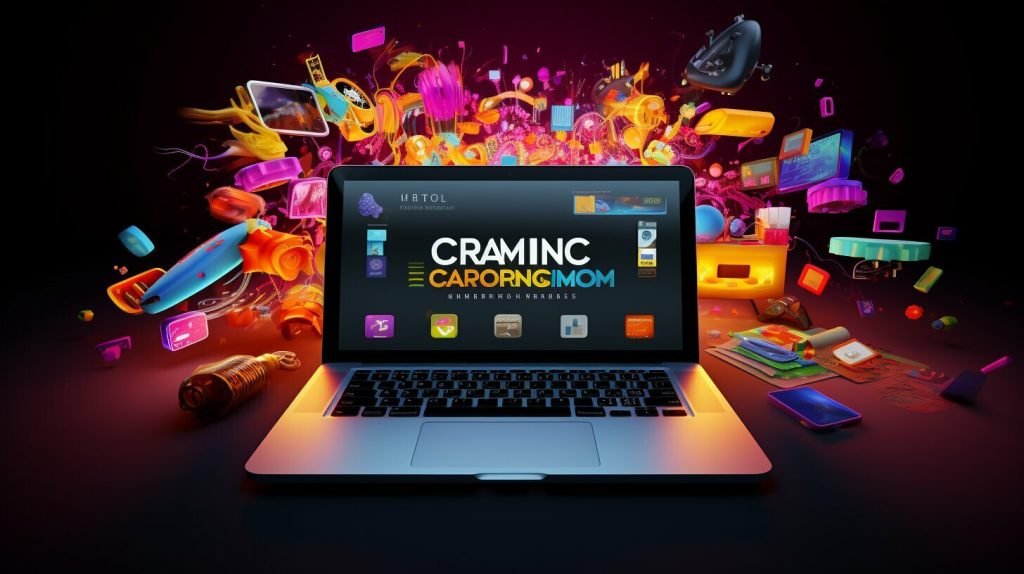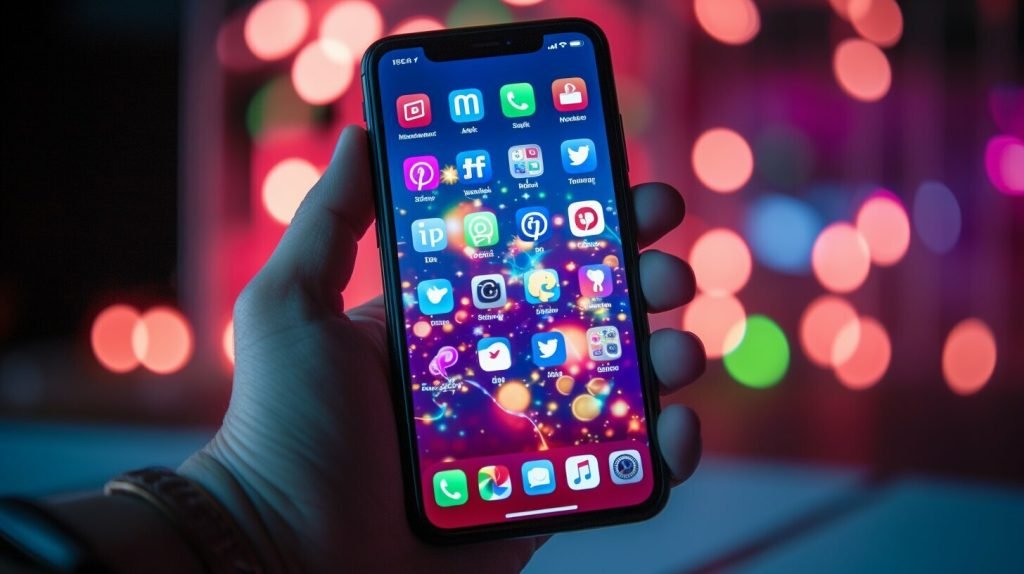Promotional strategies are essential in today’s competitive market. To stand out, businesses must incorporate both online and offline advertising techniques to effectively target and engage their audience. Combining digital marketing with traditional marketing methods can lead to increased ROI and wider brand visibility.
Key Takeaways:
- Both online and offline advertising techniques are important for effective promotional strategies
- An integrated approach can lead to increased ROI and wider brand visibility
- Online advertising offers cost-effectiveness and the ability to target specific demographics
- Offline advertising can create a tangible connection with customers and target local audiences
Understanding Online Advertising
As the world becomes increasingly digitized, online advertising has become a crucial component of promotional strategies for businesses of all sizes. Digital marketing offers a range of techniques to reach a global audience, cost-effectively target specific demographics, and engage customers in new and innovative ways.
Display Ads: One of the most well-known forms of online advertising, display ads are visual ads that appear on websites, typically in the form of banner ads or pop-ups. They can be targeted to specific audiences based on location, browsing history, and other demographic factors, making them a powerful tool for driving engagement and conversions.
Social Media Marketing: Social media platforms like Facebook, Instagram, and Twitter offer businesses the opportunity to connect with their target audience on a personal level. Through social media marketing, businesses can create engaging content, build brand awareness, and cultivate a loyal following.
Search Engine Optimization (SEO): SEO is the process of optimizing a website’s content and structure to improve its visibility on search engine results pages. By incorporating relevant keywords, building high-quality backlinks, and ensuring a user-friendly experience, businesses can improve their search engine ranking and drive traffic to their website.
Content Marketing: Content marketing involves creating valuable and informative content to engage customers and attract new ones. This can include blog posts, videos, infographics, and downloadable resources. By providing helpful information and showcasing thought leadership, businesses can establish themselves as industry experts and build trust with their audience.
Successful online promotional campaigns have utilized a combination of these digital marketing techniques to create a multi-faceted approach to reaching and engaging with customers. For example, Coca-Cola’s “Share a Coke” campaign utilized social media marketing to create a buzz around the product, while display ads and SEO drove traffic to the website and boosted engagement.

Exploring Offline Advertising
While digital marketing tends to dominate current advertising discussions, traditional marketing methods like print advertisements, television and radio commercials, direct mail, and outdoor advertising should not be overlooked when creating a comprehensive promotional strategy. Utilizing offline advertising techniques can help businesses create a tangible connection with customers and target local audiences, complementing the global reach of online advertising.
Print advertisements, such as magazine ads and billboards, offer a visual and eye-catching way to promote products and services. By placing ads in relevant publications or high-traffic areas, businesses can reach their desired target audience. Television and radio commercials can also reach a wide audience, particularly during high-profile events or during peak viewing hours. Direct mail is an effective way to target specific demographics with personalized marketing materials. Outdoor advertising, such as billboards and signage, can create a lasting impression on local audiences.
Offline advertising can be particularly effective in industries where personal connections and word-of-mouth marketing are important, such as real estate or hospitality. Successful offline campaigns often incorporate memorable visuals, catchy slogans, and calls to action that encourage customers to take action, such as visiting a store or attending an event.

“Print advertisements, such as magazine ads and billboards, offer a visual and eye-catching way to promote products and services.”
Integrating Online and Offline Advertising
Integrating both online and offline advertising techniques is crucial for creating a cohesive and effective promotional strategy. By utilizing the strengths of each method, businesses can reinforce brand messaging and reach a wider target audience.
Online advertising techniques such as display ads, social media marketing, search engine optimization (SEO), and content marketing can effectively reach global audiences and target specific demographics. Offline advertising methods such as print advertisements, TV and radio commercials, direct mail, and outdoor advertising can create a tangible connection with customers and target local audiences.
Combining online and offline techniques can also lead to increased ROI and a more comprehensive branding approach. For instance, a business could launch a digital marketing campaign to drive traffic to a physical store or use social media to promote a special in-store event.
The key to effectively integrating online and offline advertising is to ensure brand messaging and visual identity are consistent. This consistency is crucial for creating a strong brand presence and encouraging customer engagement. Additionally, tracking and analyzing data from both online and offline campaigns can provide valuable insights for refining marketing efforts and maximizing ROI.

“The future of advertising is the Internet plus local advertising. The Internet is the most powerful tool a local merchant has ever had.” – Sam Walton, founder of Walmart.
Maximizing ROI with Data-driven Strategies
As businesses strive to create effective promotional strategies, it is essential to leverage data analysis to maximize their ROI. By tracking and analyzing data from online and offline advertising campaigns, businesses can gain valuable insights into their target audience, refine marketing efforts, and ultimately achieve greater success.
One major benefit of data-driven strategies is the ability to measure ROI and adjust promotions accordingly. By tracking metrics like click-through rates, conversions, and cost-per-acquisition, businesses can identify which advertising techniques are most effective and allocate resources accordingly. This data can also help identify areas for improvement and provide direction for future marketing campaigns.
For example, if a business sees a lower ROI from print advertisements compared to social media marketing, they may choose to shift more resources to the latter. Data analysis can also help identify which demographics are most responsive to certain advertising techniques, allowing for more targeted promotional efforts.
Overall, data-driven strategies are essential for creating successful promotional campaigns. By leveraging data analysis to inform advertising decisions, businesses can maximize their ROI, reach a wider audience, and ultimately boost their bottom line.

Leveraging Social Media for Brand Promotion
Social media has become an essential component of online advertising and brand promotion. With over 4 billion active social media users worldwide, businesses can reach a global audience and connect with their target customers like never before.
There are various social media platforms available, each with its unique features and audience demographics. Facebook, Instagram, Twitter, LinkedIn, and TikTok are some of the most popular social media platforms that businesses can leverage to promote their brand and products.
The key to effective social media marketing is creating engaging and valuable content that resonates with the target audience. Businesses should focus on building relationships with their followers, rather than just promoting their products or services. By creating a community of loyal followers, businesses can drive brand awareness, customer engagement, and sales.
Tips for Creating Effective Social Media Marketing Campaigns
Here are some tips and best practices for creating successful social media marketing campaigns:
- Identify the target audience and choose the right social media platform
- Create a content calendar and plan posts in advance
- Use visuals, such as images and videos, to capture attention
- Incorporate hashtags and keywords to increase visibility
- Encourage user-generated content and engagement, such as contests or surveys
- Monitor analytics and adjust strategies accordingly
By implementing these tips, businesses can create impactful social media campaigns that drive brand awareness, customer engagement, and sales.

“Social media is not about the exploitation of technology, but service to community.” – Simon Mainwaring
The Impact of Content Marketing
Content marketing has become an increasingly popular strategy for businesses looking to make an impact in the online advertising space. The goal of content marketing is to engage and inform potential customers with valuable and relevant content that ultimately drives conversions.
One of the most common forms of content marketing is blogging. By creating blog posts on topics related to their industry or niche, businesses can establish themselves as thought leaders and build trust with their audience. Blogging also provides opportunities for SEO optimization, making it easier for potential customers to find the business online.
Other forms of content marketing include videos, infographics, and downloadable guides or resources. These formats can be especially effective at capturing and retaining the attention of potential customers. For example, a visually appealing infographic can quickly convey complex information and statistics in a way that is easy to understand and digest.
One key advantage of content marketing is its ability to attract customers who may not have otherwise been reached through traditional advertising channels. By providing valuable, non-promotional content, businesses can attract a wider audience and build brand awareness.
Another benefit of content marketing is its potential to drive organic traffic to a business’s website. Well-crafted content that provides value to readers has the potential to go viral, generating shares and backlinks that can boost a business’s search engine rankings.
“Content marketing is the future of advertising,” says digital marketing expert John Smith. “By providing valuable content to your audience, you can establish yourself as a trusted resource and build a loyal customer base.”
By leveraging a combination of online and offline advertising techniques, businesses can create a comprehensive promotional strategy that maximizes ROI and reaches a wide audience. Incorporating content marketing into the mix can provide additional benefits, such as improved search engine rankings and increased brand awareness.

The Power of Offline Experiences
While online advertising has become increasingly important in promotional campaigns, offline experiences should not be overlooked. In fact, creating memorable and impactful offline campaigns can enhance brand promotion and customer engagement.
One way to achieve this is through experiential marketing, which allows customers to interact with a brand in a tangible way. For example, a cosmetics company could set up a pop-up shop where customers can test and purchase products, or a beverage company could host a tasting event to introduce their new flavors. These experiences create a personal and memorable connection with the brand, which can lead to increased brand loyalty and word-of-mouth promotion.
Another way to leverage offline experiences is through events and partnerships. By sponsoring or hosting events, businesses can increase their visibility and reach new audiences. For example, a fitness apparel company could sponsor a marathon and offer free samples to participants, or a home decor store could partner with a designer to host a home styling workshop. These events can generate buzz and excitement around the brand, as well as provide opportunities for customers to interact with the brand in person.
| Benefits of Offline Advertising | Examples |
|---|---|
| Creates a tangible connection with customers | A cosmetics company setting up a pop-up shop |
| Targets local audiences | A home decor store hosting a home styling workshop |
| Opportunities for customers to interact with the brand | A beverage company hosting a tasting event |
| Generates buzz and excitement around the brand | A fitness apparel company sponsoring a marathon |
By incorporating offline experiences into promotional strategies, businesses can enhance brand promotion and customer engagement.

Conclusion
Incorporating both online and offline advertising techniques is essential for any successful promotional strategy. Combining traditional marketing methods with digital marketing can increase ROI, reach a broader audience, and create a cohesive brand presence.By understanding the advantages of online advertising, businesses can leverage techniques like display ads, social media marketing, SEO, and content marketing to connect with their target audience. On the other hand, offline advertising can create a tangible connection with customers and target local audiences. Print advertisements, TV and radio commercials, direct mail, and outdoor advertising are just a few examples of successful offline promotional campaigns.The integration of online and offline advertising techniques creates a more comprehensive and effective promotional strategy. Combined efforts can reinforce brand messaging and provide valuable insights for refining marketing efforts. Measuring ROI and adjusting promotional strategies based on data-driven insights can further optimize a promotional campaign.Leveraging social media platforms and creating valuable content are also powerful tools for brand promotion and online advertising. Experiential marketing, events, and partnerships can create memorable and impactful offline experiences.In conclusion, businesses that utilize both online and offline advertising techniques in their promotional strategies have a competitive advantage. Implementing the techniques discussed in this article can help boost promotional efforts, reach a wider audience, and increase ROI.How Does Understanding the Target Audience Help in Online and Offline Advertising Success?
Understanding the target audience analysis strategies for success is crucial in both online and offline advertising. By knowing the preferences, needs, and characteristics of your target audience, you can tailor your message, design, and placement to effectively capture their attention. This deep understanding ensures that your advertising efforts resonate with the right people, leading to higher engagement and conversion rates.
FAQ
Q: What are promotional strategies?
A: Promotional strategies refer to the various techniques and tactics businesses use to promote their products or services. These strategies aim to increase brand awareness, attract customers, and ultimately drive sales.
Q: Why is it important to incorporate both online and offline advertising techniques?
A: Incorporating both online and offline advertising techniques allows businesses to reach a wider target audience and maximize their promotional efforts. Online advertising provides the opportunity to reach a global audience and target specific demographics, while offline advertising creates a tangible connection with customers and can target local audiences.
Q: What are some examples of online advertising techniques?
A: Online advertising techniques include display ads, social media marketing, search engine optimization (SEO), and content marketing. These methods leverage digital platforms to promote products or services and engage with customers.
Q: What are some examples of offline advertising techniques?
A: Offline advertising techniques include print advertisements, TV and radio commercials, direct mail, and outdoor advertising. These methods utilize traditional marketing channels to reach potential customers and create brand awareness.
Q: How can online and offline advertising be integrated?
A: Online and offline advertising can be integrated by creating a cohesive promotional strategy that utilizes both digital and traditional marketing techniques. This integration can reinforce brand messaging and reach a wider audience, resulting in a more effective marketing campaign.
Q: How can data-driven strategies maximize ROI?
A: Data-driven strategies utilize analytics to track and analyze data from online and offline advertising campaigns. This enables businesses to gain valuable insights and optimize their promotional efforts, ultimately maximizing their return on investment (ROI).
Q: How can social media be leveraged for brand promotion?
A: Social media platforms provide businesses with an opportunity to connect with their target audience, build brand awareness, and drive engagement. By leveraging different social media channels, businesses can create effective online advertising campaigns that promote their brand and engage customers.
Q: What is content marketing and how does it impact online advertising?
A: Content marketing involves creating valuable and engaging content, such as blog posts, videos, infographics, and downloadable resources, to attract and retain customers. By incorporating content marketing into their online advertising strategies, businesses can provide valuable information to their target audience and establish themselves as industry leaders.
Q: How can offline experiences enhance brand promotion?
A: Offline experiences, such as experiential marketing, events, and partnerships, play a crucial role in enhancing brand promotion. These offline advertising techniques create memorable and impactful experiences that elevate brand visibility and customer engagement.
Q: What is the key takeaway from this article?
A: Incorporating both online and offline advertising techniques in promotional strategies can lead to increased ROI, wider audience reach, and a cohesive brand presence. Businesses are encouraged to implement the strategies and techniques discussed in this article to boost their promotional efforts.

